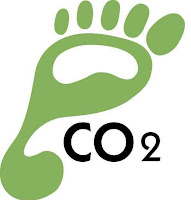A Block Social Studies 10 - Today we'll continue with the glossary of economic terms (NOTE: it is due today) and then we'll continue to look at the key points and important information about the following British Columbian industries:
- Forestry
- Fisheries
- Agriculture
- Mining
- Tourism
- Other (human and health services or film & television production and technology)
- An overview of extraction/production methods (what is taken or produced and how it is done)
- An overview of the impact on the economy of the province (how much money is made, how many people are employed, where in the province it is done, where the product is sold)
- An explanation of the issues associated with the industry (social, environmental, economic concerns).
- A job futures explanation (sunrise/sunset, rising/falling, etc...)
48 Hours Mystery aired an episode titled "The Curse of Small Town U.S.A". The description from their website reads like this:
Methamphetamine is a powerful, cheap drug and it is a growing problem in some surprising parts of America. Unlike crack cocaine, which primarily targeted the inner-city during its reign of terror in the 1980's, crank is making it's mark in Small Town, U.S.A. The drug's users range from middle class and well-educated people to teens -- even mothers who have passed on their addictions to their babies. One of the reasons crank is growing so quickly is that methamphetamine is easily produced in makeshift labs from inexpensive raw materials. In addition, users experience a "high" lasting up to 30 hours -- much longer than many other drugs. "Methamphetamine may be the worst drug ever to hit America," says retired General Barry McAffrey, the nation's Drug Czar. "It's expanding in a very bizarre manner. It's all over the Midwest. It's in Idaho, Arizona, Hawaii, San Francisco, Southern California. It's now showing up in Georgia." Crank's explosive growth is being fueled by mass production labs run by Mexican nationals. Authorities say they produce up to 95% of the crank on America's streets. CBS News 48 Hours took a close look at methamphetamine on Thursday, and found a drug that threatens to tear apart the lives of countless Americans. Could your community be at risk?
So we'll watch parts of the 1990's 48 Hours episode "On Crack Street"
and then we'll watch the Discovery Channel documentary American Underworld: Homemade Illegal Drugs"
So after watching today's videos I'll ask you to answer the following:
- What messages about race and drug use do the videos show? (think about who uses meth, who makes meth, and who sells it).
D Block Geography 12 - Today I'd like to continue our conversation about the ideas that Jared Diamond raises in his book Collapse: How Societies Choose to Fail or Succeed. He identifies 12 major issues/problems that we must address in the near future and I'd like to go over those with you (they form the basis of your activity next Monday and Tuesday). Next, we'll spend some time looking at climate change. We'll examine the possible future for BC and Vancouver Island and see the issues that will confront us with water, drought, landslides, species migration, forest transformation, air quality degradation, glacial retreat, energy disruptions and coastal flooding to name a few. NASA has a good website (Earth Observatroy Global Warming) that tries to explain the concept of climate change and global warming without a biased political viewpoint for or against the subject. Check it out. You could also look at the Hyper Physics website from the department of Physics and Astronomy at Georgia State University. We'll watch the first half of the National Geographic DVD “Six Degrees Could Change the World”. This DVD shows the potential environmental changes (not the actual ones) that may happen with incremental degrees of climate change.
We'll also look at solutions...solutions to what? Remember it's too late to be a pessimist! Look below for places to get information on what to do:

Websites that may help you with Climate Change activism and empowerment are: Clean Air Champions High School Challenge; Three Fifty; David Suzuki Foundation Climate Change; Climate Action Network Canada; Dream in Green; or Teens Turning Green.






No comments:
Post a Comment